Abstract
Despite a remarkable increase of deceased donors, organ shortage is the main hurdle of organ transplantation in Korea. Therefore, liver transplantation priority is a major issue of liver allocation. We confront a situation that needs to change in order to achieve more adequate and objective allocation of the system. We considered the MELD system as an alternative to the CTP score and Status system. For application of the MELD system, comparison between two systems is required; and a national-based retrospective review of liver transplantation candidates (waiting list) was conducted as a multicenter collaborative study. Eleven transplant centers participated in this national study. From 2009 to 2012, 2,702 waiting lists were enrolled. After mean 349±412 days follow-up, 967 patients (35.8%) of liver transplantation, 750 patients (27.8%) of drop-out/mortality, and 719 patients (26.6%) on waiting were identified. In analysis of patient mortality during waiting time, status system showed significant difference of waiting mortality by status at registration. However, differences of waiting mortality by MELD system were more prominent and discriminate. In comparisons by MELD score in exclusive Status 2A waiting patients, there was a significant difference of waiting mortality by MELD score. This means that the MELD system is a good predictor of short-term survival after listing compared with status system with CTP score. Korean national-based retrospective study showed the superiority of the MELD system in prediction of short-term mortality and usefulness as a determinant for allocation priority.
References
1). Kim MS, Kim SI, Kim YS. Current status of deceased donor organ recovery and sharing in Korea. J Korean Med Assoc. 2008; 51:685–91.

2). Wiesner RH, McDiarmid SV, Kamath PS, Edwards EB, Malinchoc M, Kremers WK, et al. MELD and PELD: application of survival models to liver allocation. Liver Transpl. 2001; 7:567–80.

3). Malinchoc M, Kamath PS, Gordon FD, Peine CJ, Rank J, ter Borg PC. A model to predict poor survival in patients undergoing transjugular intrahepatic portosystemic shunts. Hepatology. 2000; 31:864–71.

4). Santori G, Andorno E, Morelli N, Antonucci A, Bottino G, Mondello R, et al. MELD score versus conventional UNOS status in predicting short-term mortality after liver transplantation. Transpl Int. 2005; 18:65–72.

5). Dutkowski P, Oberkofler CE, Béchir M, Müllhaupt B, Geier A, Raptis DA, et al. The model for end-stage liver disease allocation system for liver transplantation saves lives, but increases morbidity and cost: a prospective outcome analysis. Liver Transpl. 2011; 17:674–84.

6). Cywinski JB, Mascha EJ, You J, Sessler DI, Kapural L, Argalious M, et al. Pre-transplant MELD and sodium MELD score are poor predictors of graft failure and mortality after liver transplantation. Hepatol Int. 2011; 5:841–9.
7). Korean Network for Organ Sharing (KONOS). 2010 Annual Data Report [Internet]. Seoul: KONOS;2011. [cited 2012 May 5]. Available from:. http://www.konos.go.kr.
8). Kim MS, Kim SI, Kim YS. Current status of deceased donor organ recovery and sharing in Korea. J Korean Med Assoc. 2008; 51:685–91.

9). Joo DJ, Kim MS, Kim SI, Jeon KO, Huh KH, Choi GH, et al. Severity of end-stage liver disease in liver transplant candidate; comparison of KONOS status with MELD score. J Korean Soc Transplant. 2012; 26:112–9.

10). Hong G, Lee KW, Suh SW, Yoo T, Kim H, Park MS, et al. The model for end-stage liver disease score-based system predicts short term mortality better than the current Child-Turcotte-Pugh score-based allocation system during waiting for deceased liver transplantation. J Korean Med Sci. 2013; 28:1207–12.

11). Korean Network for Organ Sharing (KONOS). 2012 Annual Data Report [Internet]. Seoul: KONOS;2012. [cited 2013 Nov 5]. Available from:. http://www.konos.go.kr.
12). Institute of Medicine (U.S.). Analysis of waiting times. Committee on Organ Procurement and Transplantation Policy, Institute of Medicine (U.S.). Organ procurement and transplantation: assessing current policies and the potential impact of the DHHS final rule. Washington, D.C.: National Academy Press;1999. p. 57–9.
Fig. 1.
Overview of liver transplant candidate (waiting list). Abbreviations: HCC, hepatocellular carcinoma.
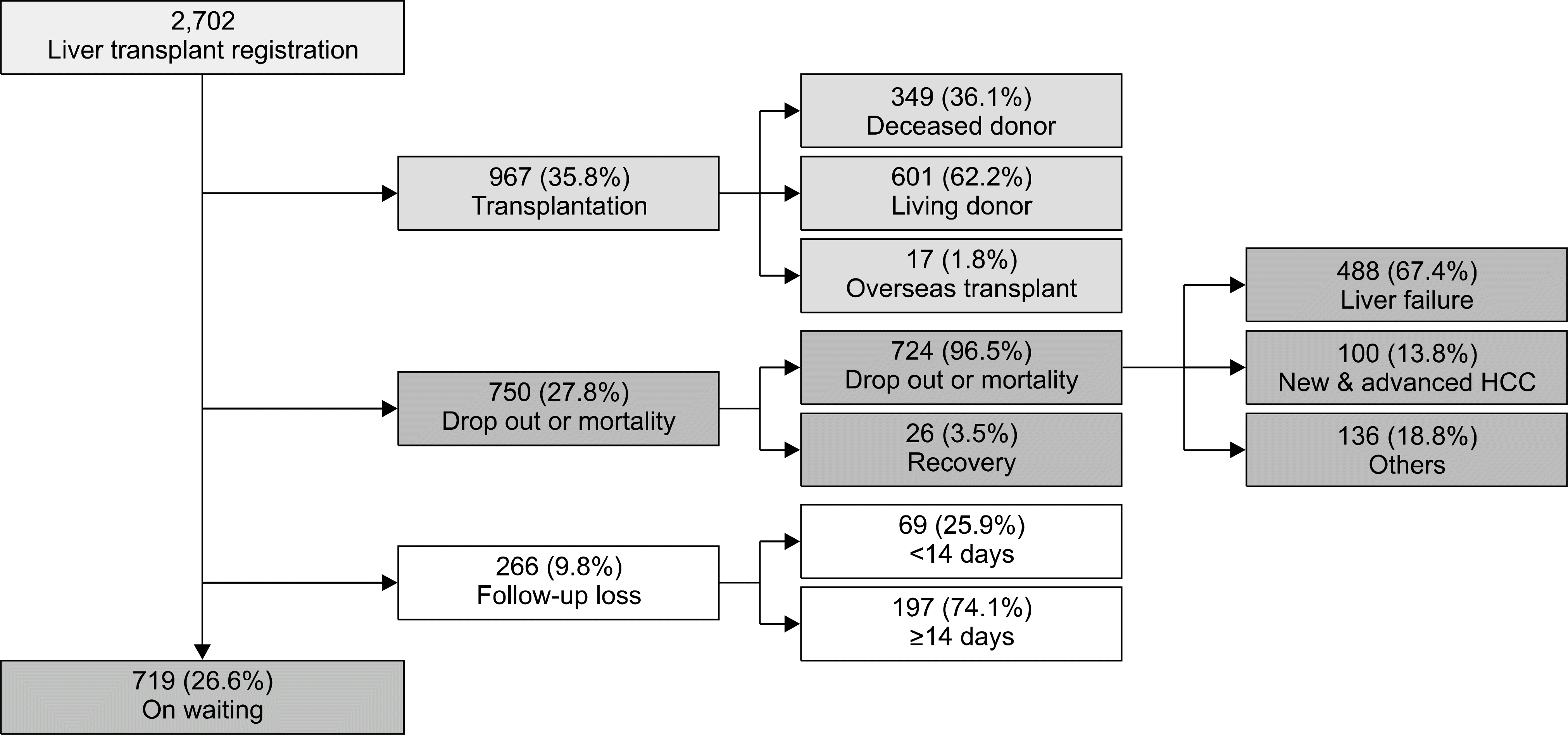
Fig. 6.
Waiting list survival rate after registration by MELD score. Abbreviation: MELD, model for end-stage liver disease.
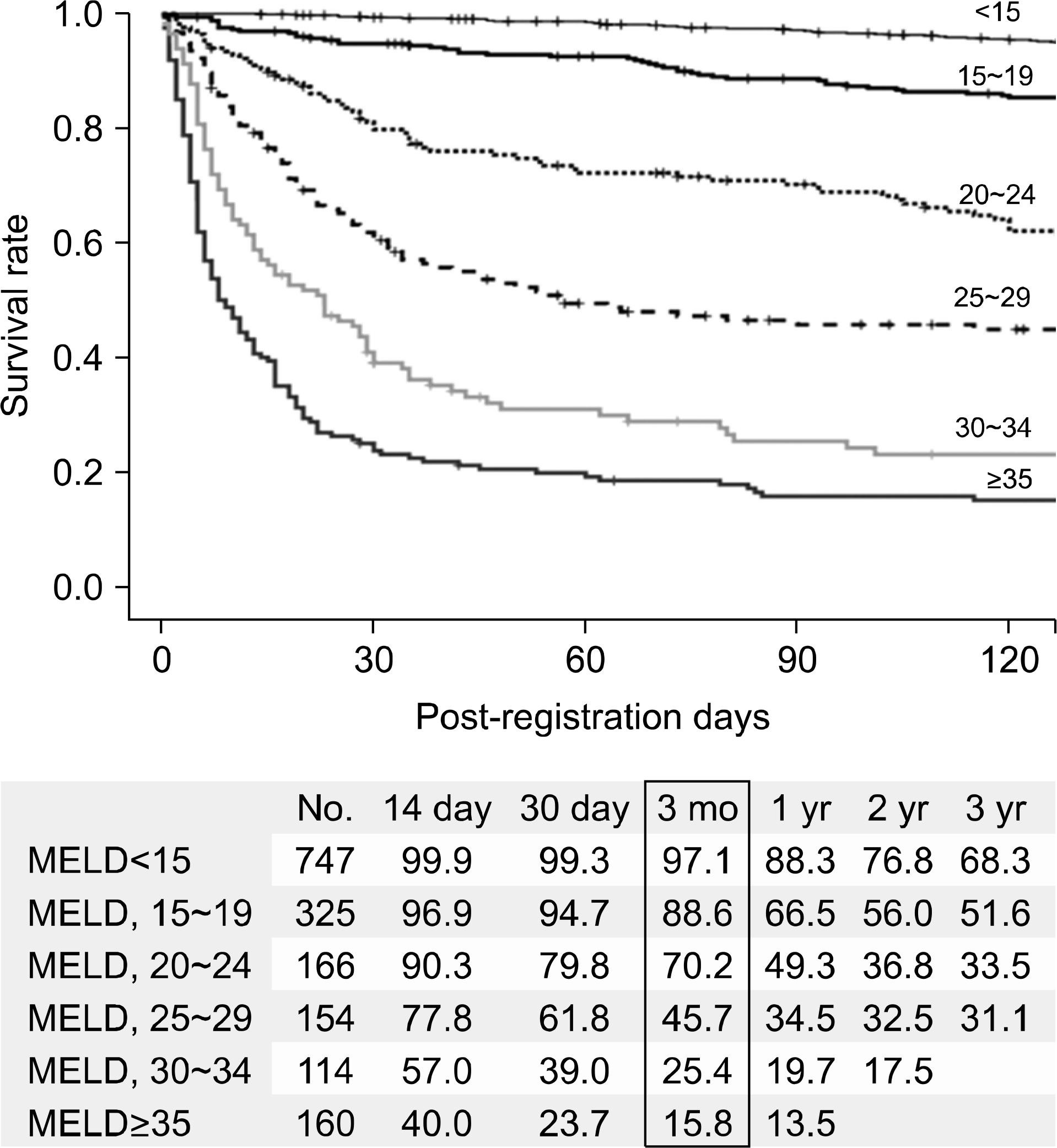
Fig. 7.
Waiting list survival rate after registration by MELD score in Status 2A. Abbreviation: MELD, model for end-stage liver disease.
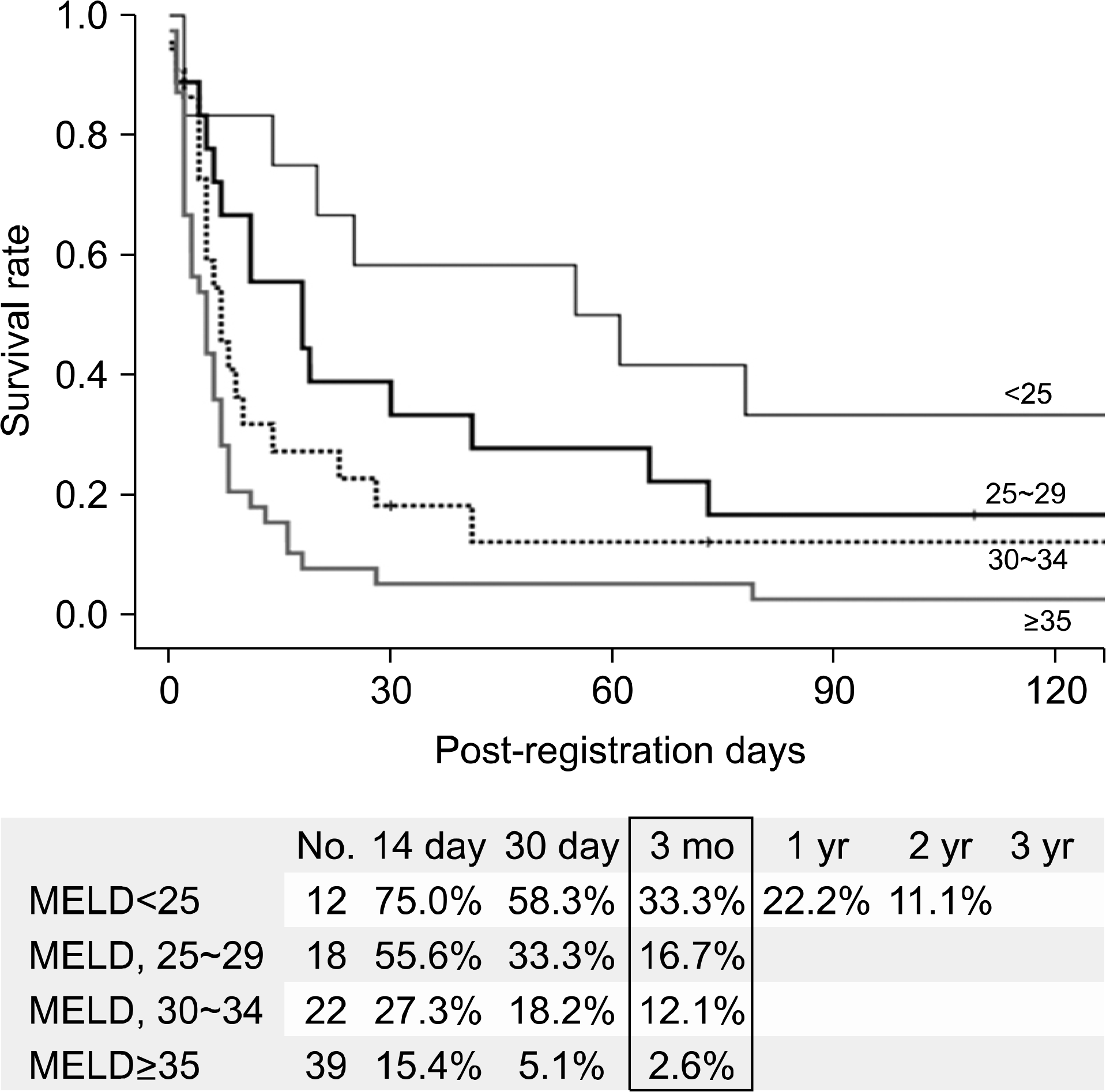
Fig. 8.
Waiting list survival rate after registration by MELD score in Status 2B. Abbreviation: MELD, model for end-stage liver disease.
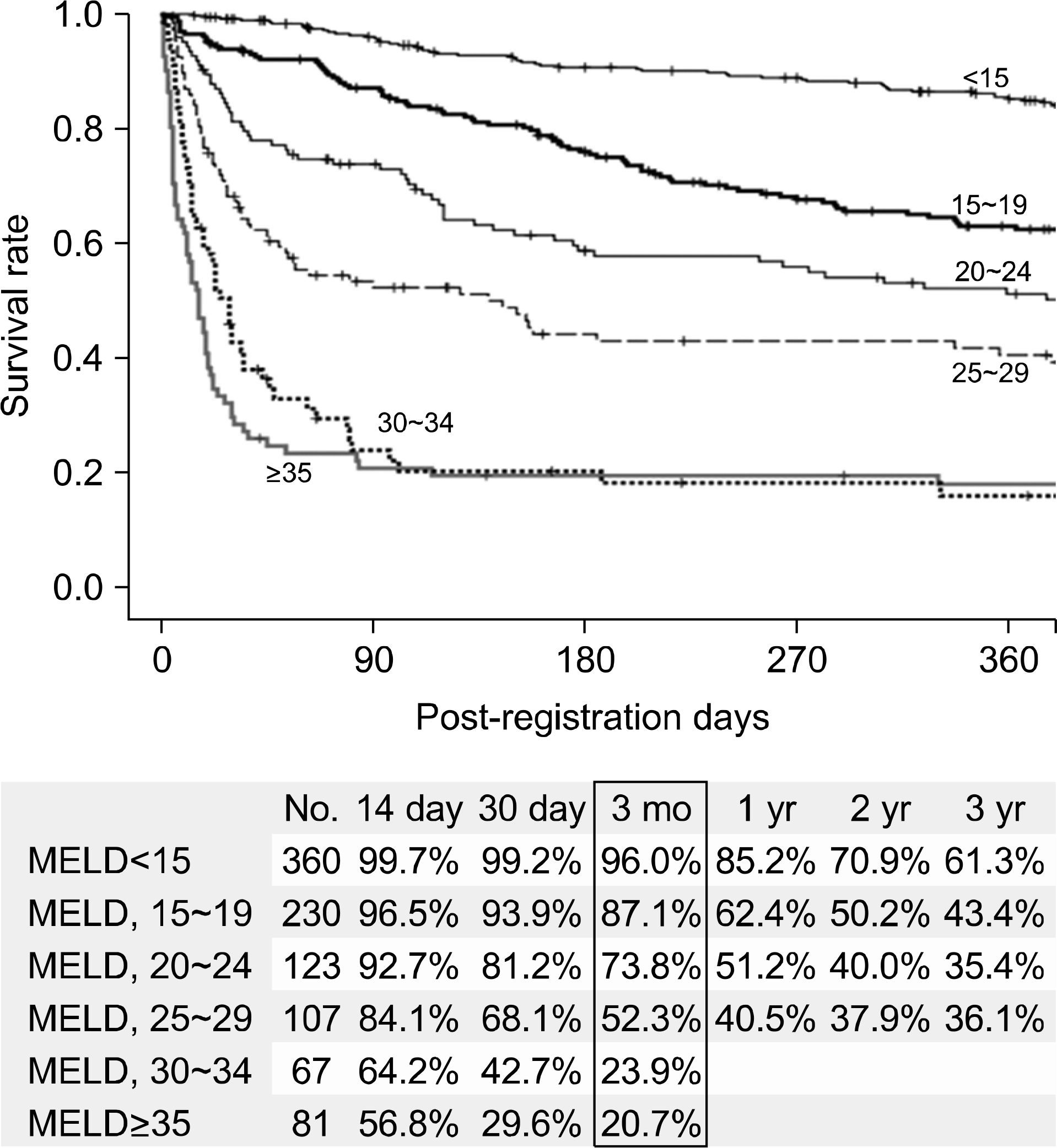
Fig. 9.
Waiting list survival rate after registration by MELD score in Status 3. Abbreviation: MELD, model for end-stage liver disease.
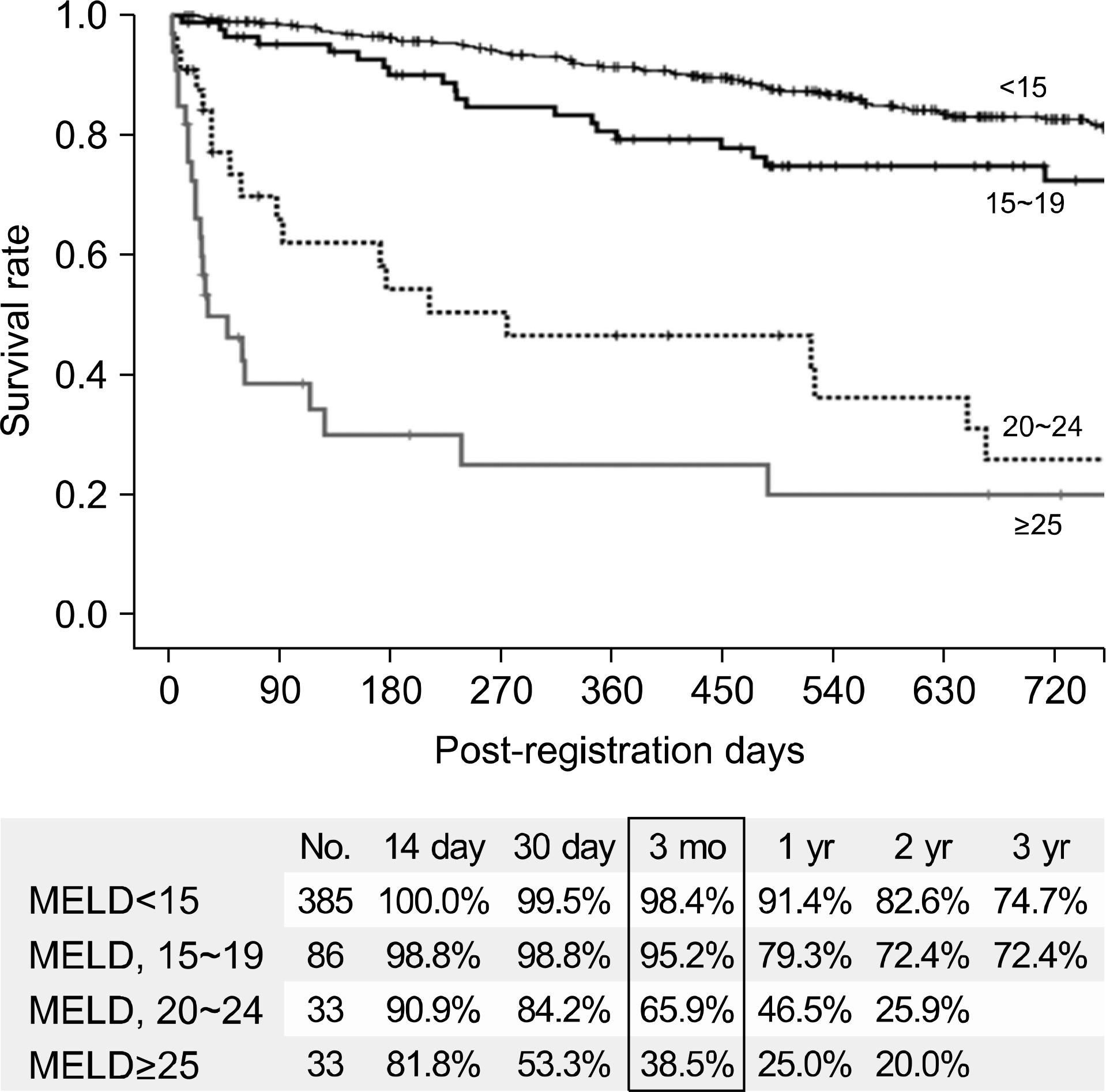
Fig. 10.
Overview of liver transplant candidate with hepatocellular carcinoma. Abbreviations: HCC, hepatocellular carcinoma; LD, liver disease.
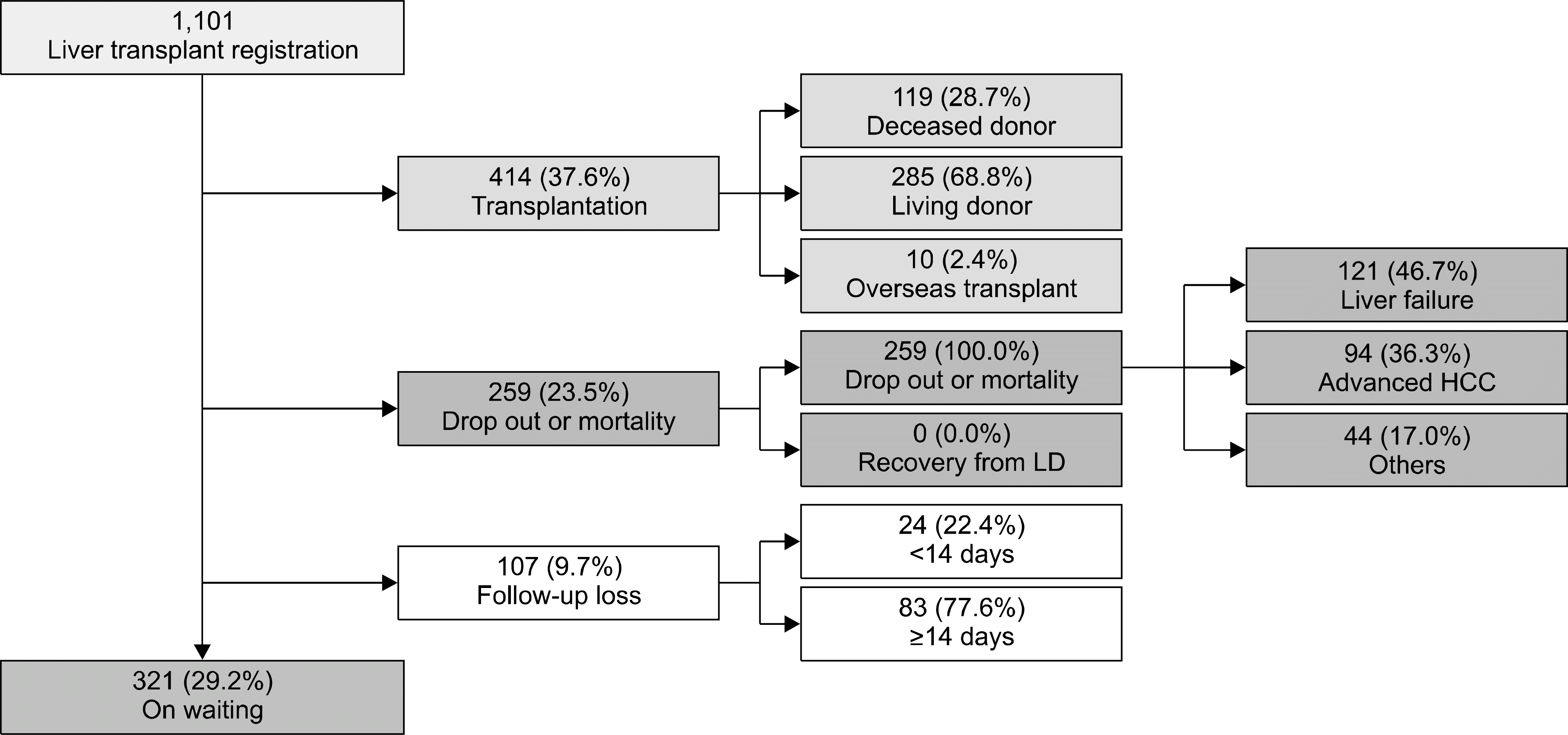
Fig. 11.
Liver transplantation rate by hepatocellular carcinoma. Abbreviation: HCC, hepatocellular carcinoma.
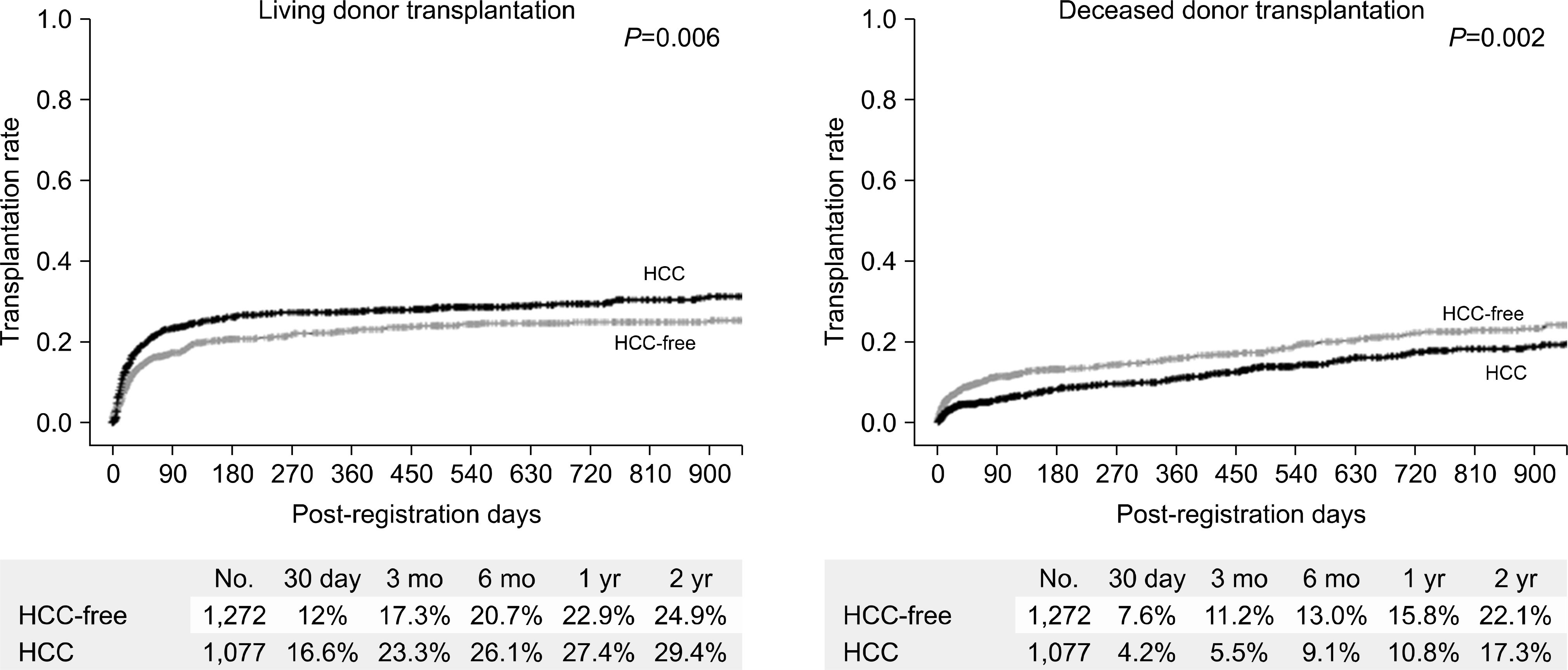
Fig. 12.
Recurrence rate of hepatocellular carcinoma during waiting time. Abbreviation: HCC, hepatocellular carcinoma. a Exclude center No. = 2 due to incomplete date.
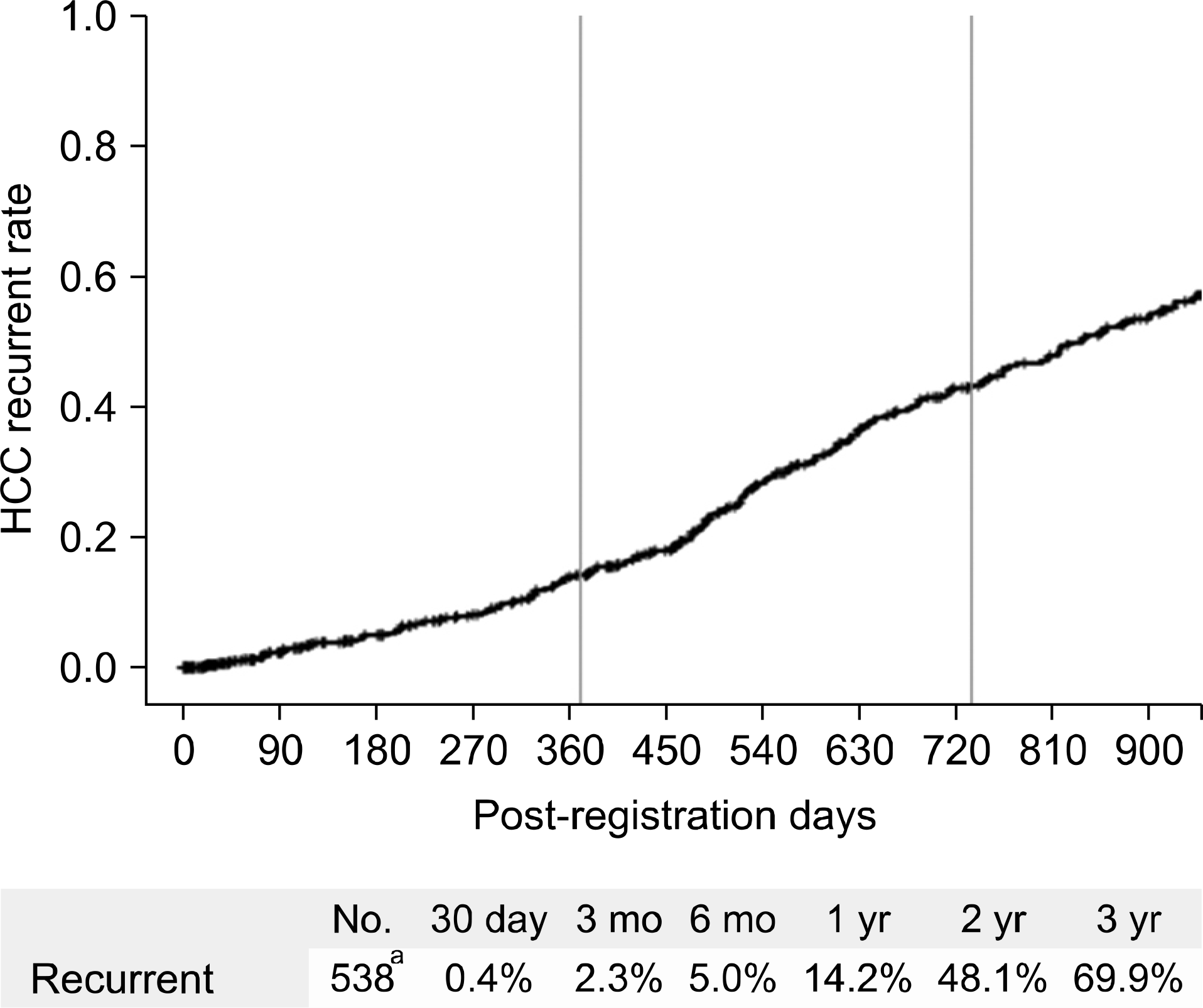
Fig. 13.
Different effects of MELD score on waiting list survival rate by hepatocellular carcinoma. Abbreviations: MELD, model for end-stage liver disease; HCC, hepatocellular carcinoma.
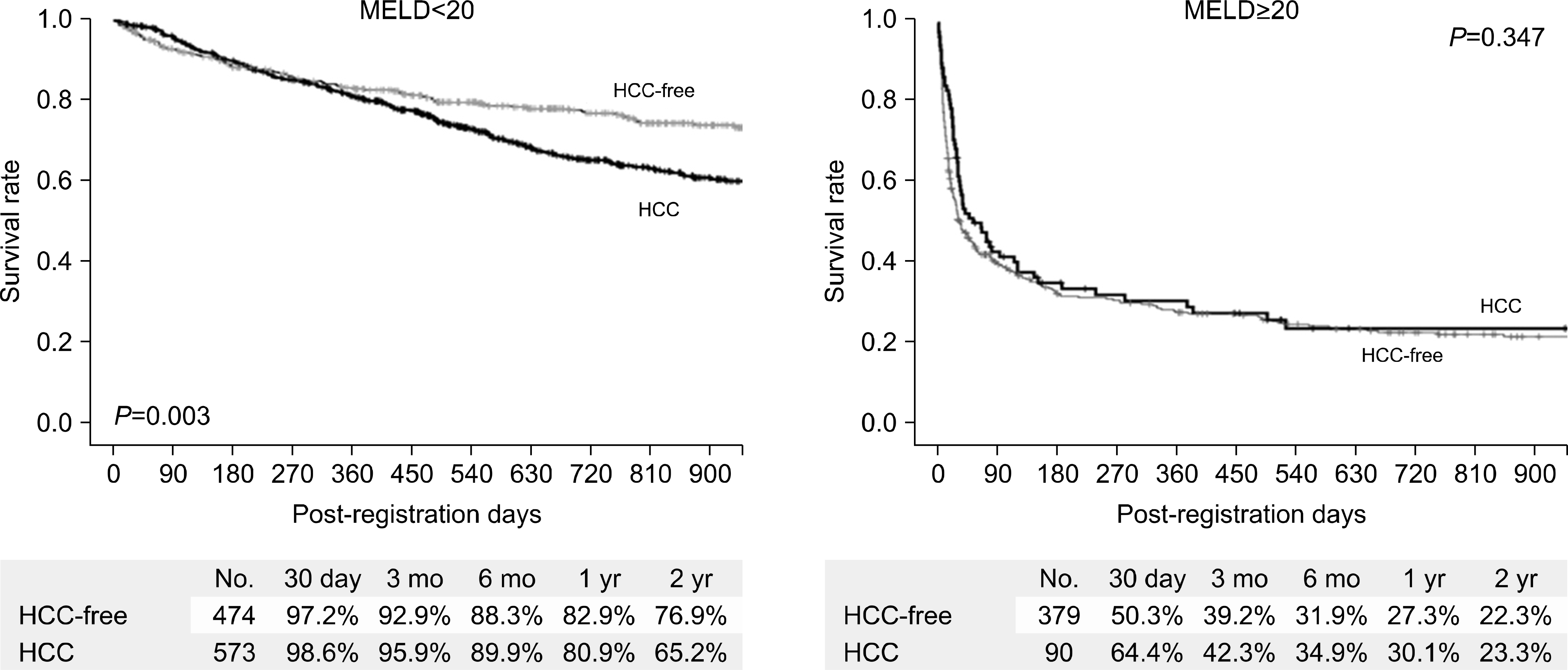
Table 1.
Transplantation center list
| 장기이식센터 | 책임자 a | 소속 및 직위 | 자료관리자 | 증례수 |
|---|---|---|---|---|
| 연세대 세브란스병원 | 김명수 | 연세의대 교수 연구책임자 | 전경옥 | 399 |
| 서울삼성병원 | 권준혁 | 성균관의대 교수 | 홍승희, 이윤미, 강은진 | 538 |
| 고려대학교 병원(안암) | 김동식 | 고려의대 교수 | 김수진 | 66 |
| 울산대병원 | 나양원 | 울산의대 교수 | 송순경, 권은경 | 94 |
| 아주대병원 | 왕희정 | 아주대의대 교수 | 이미영 | 54 |
| 서울성모병원 | 유영경 | 가톨릭의대 교수 | 한재현 | 102 |
| 전북대병원 | 유희철 | 전북의대 교수 | 성 숙 | 83 |
| 서울대병원 | 이광웅 | 서울의대 교수 | 이광웅 | 657 |
| 대구카톨릭대병원 | 최동락 | 가톨릭의대 교수 | 한영석 | 48 |
| 건양대병원 | 최인석 | 건양의대 교수 | 김경순 | 12 |
| 서울아산병원 | 황 신 | 울산의대 교수 | 장지연 | 649 |
| 2,702 |




 PDF
PDF ePub
ePub Citation
Citation Print
Print


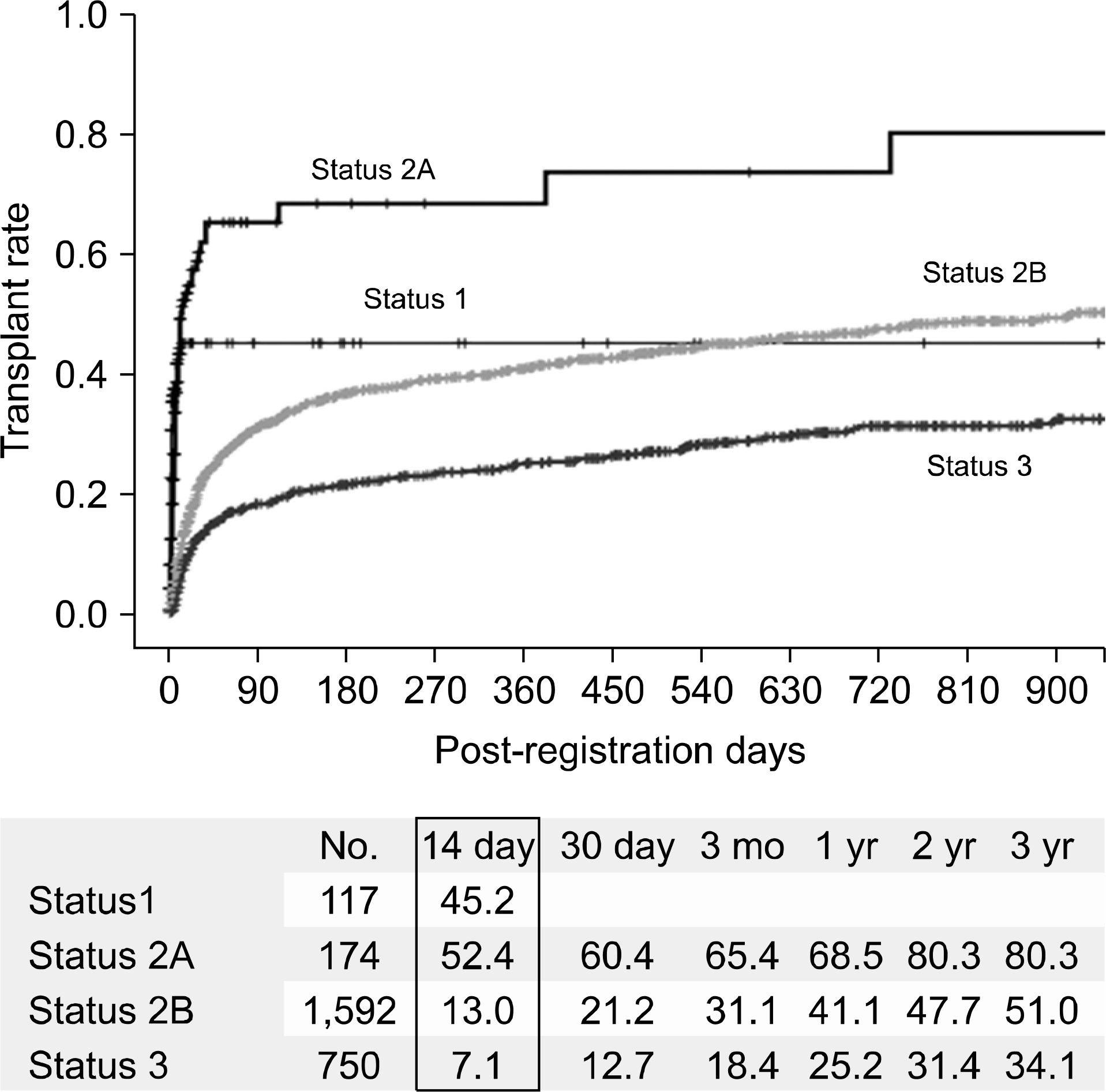
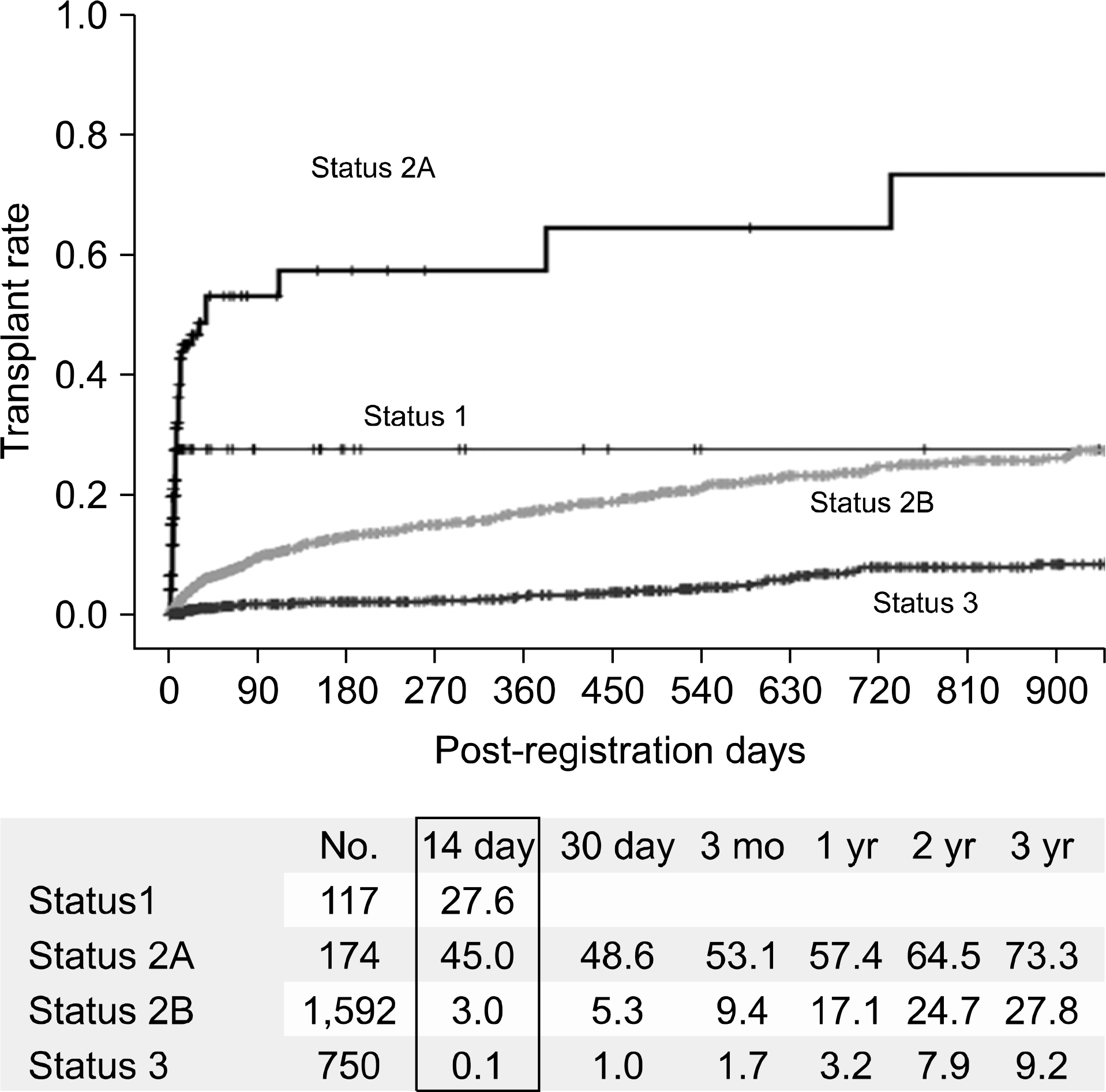
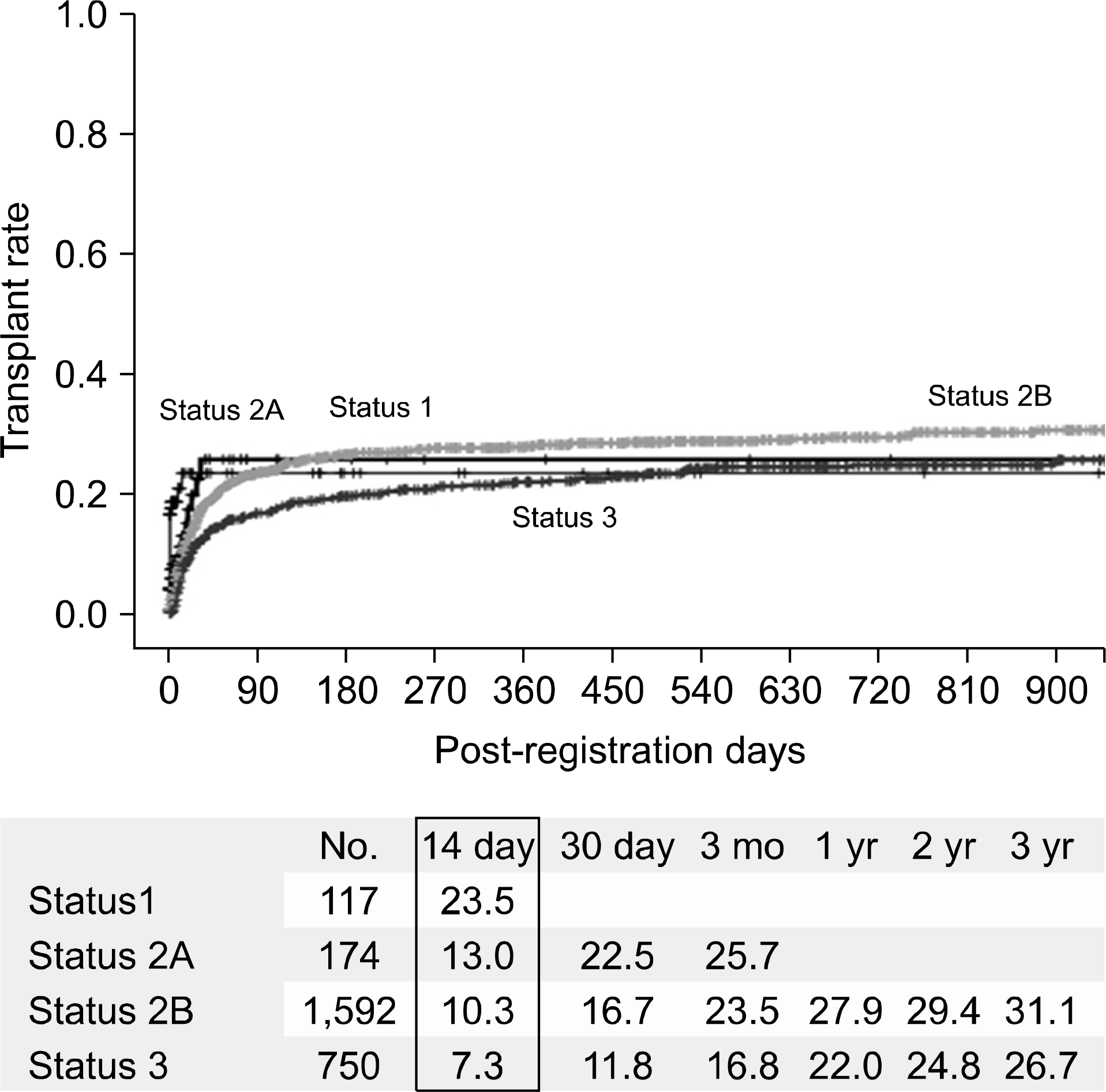
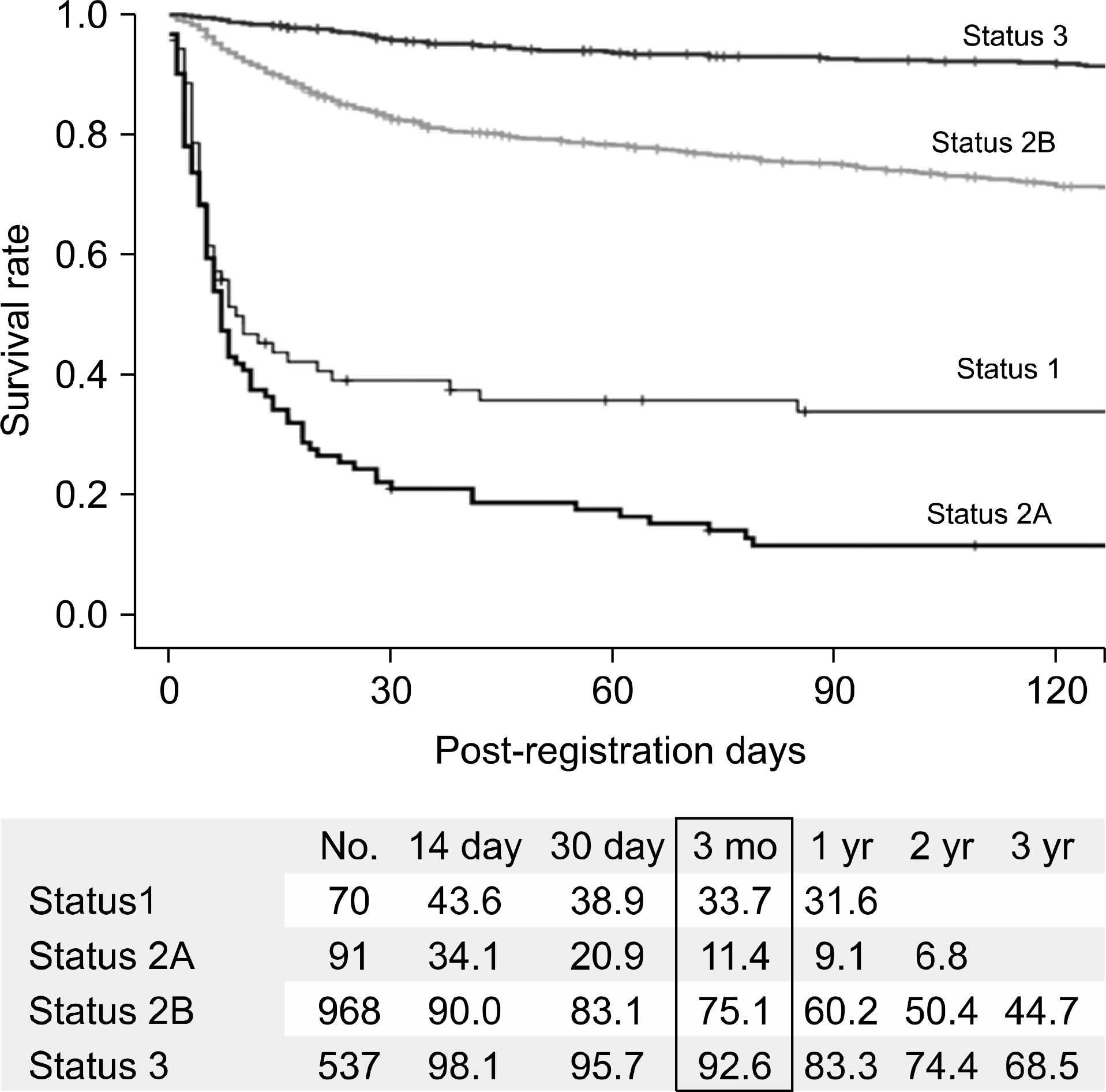
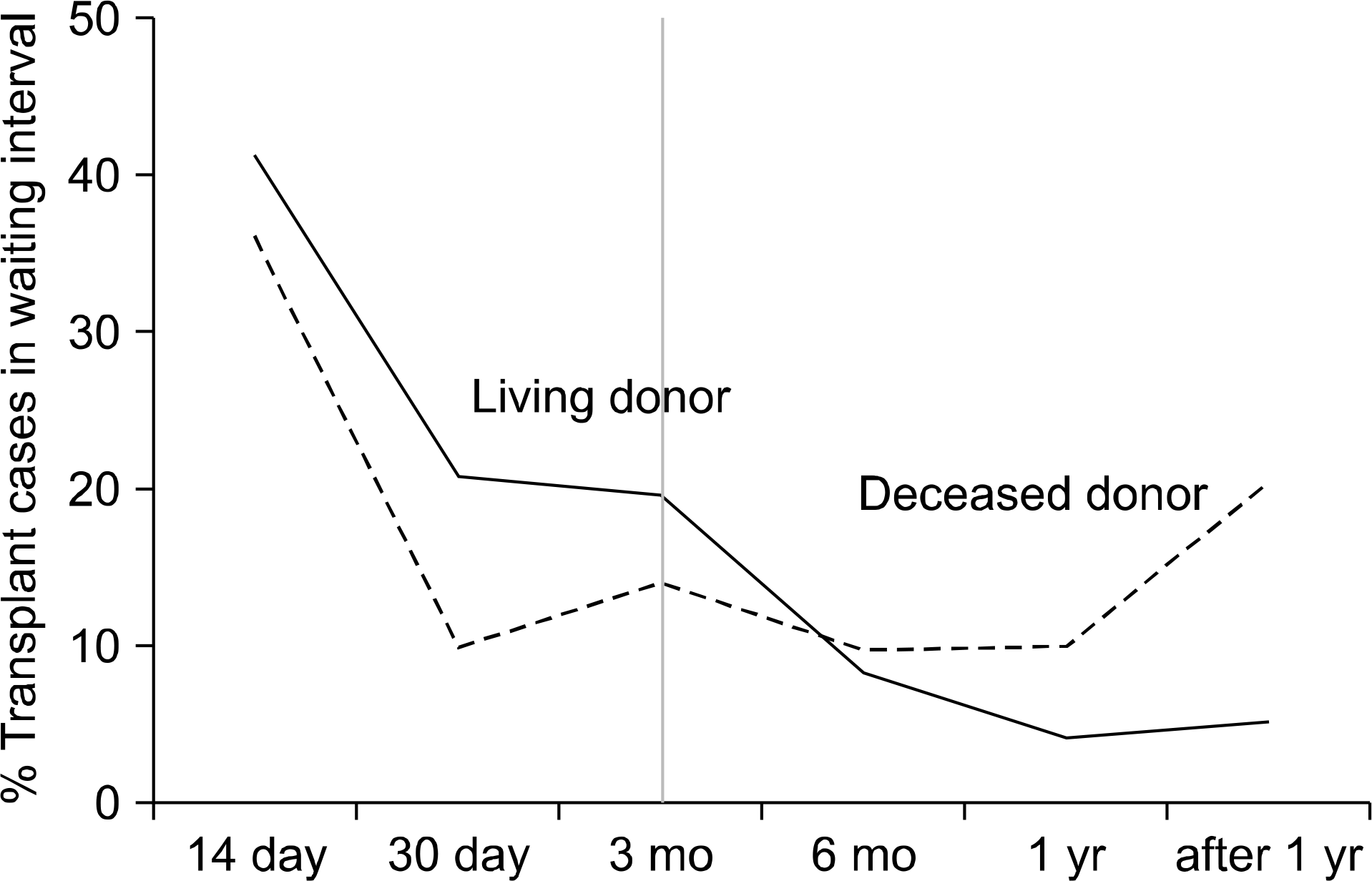
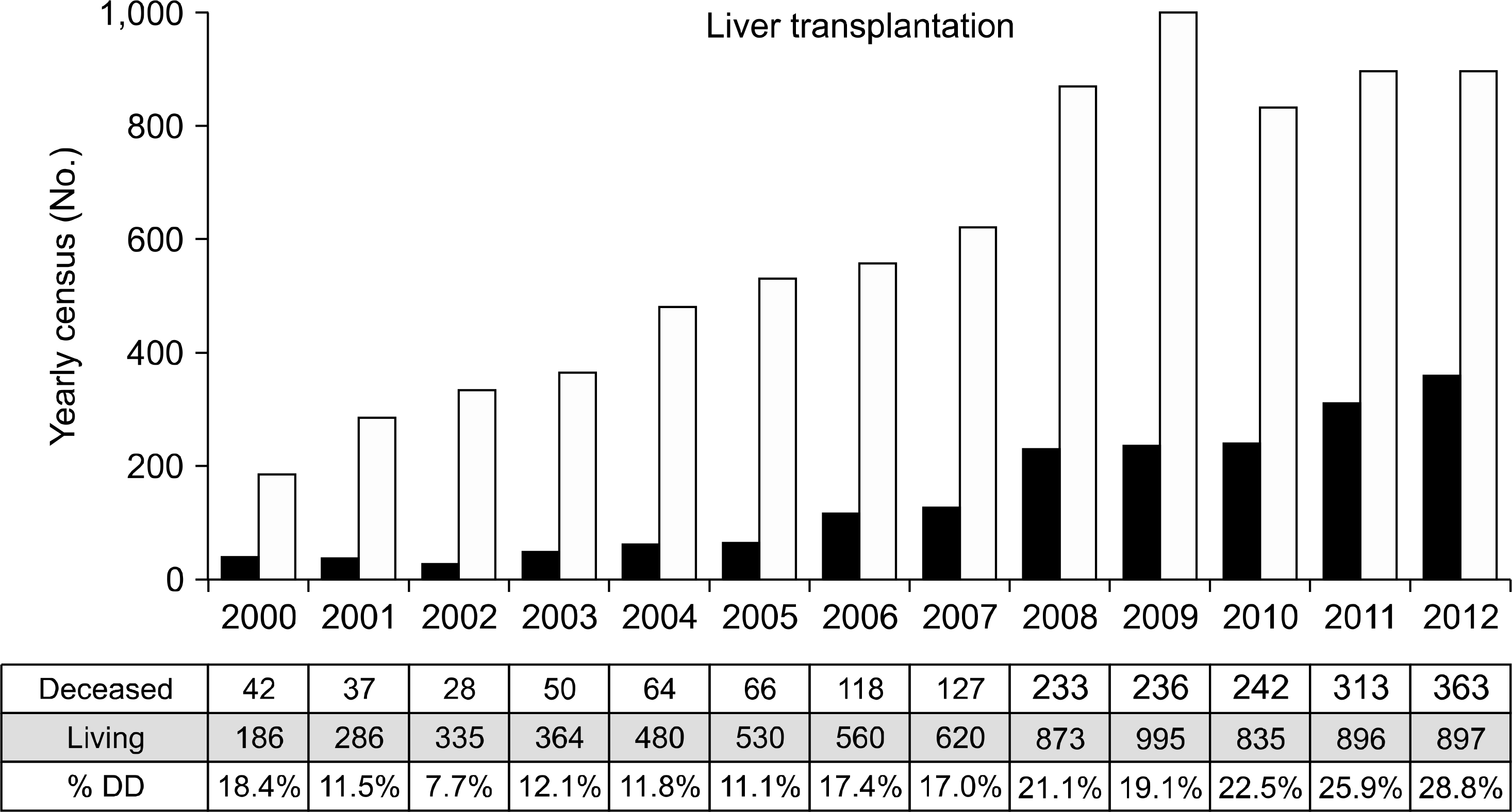
 XML Download
XML Download